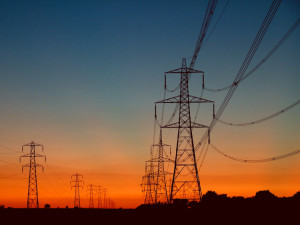Large scale-power outages caused by tropical cyclones can be prevented almost entirely if a small but critical set of power lines is protected against storm damages, a new study published in Nature Energy finds.

Scientists from the Potsdam Institute for Climate Impact Research (PIK) developed a new method that can be used to identify those critical lines and increase the system’s resilience. Based on a model of the Texas power grid on the US Gulf Coast, their analysis reveals how large-scale power outages actually occur and how to prevent them. The Texas power grid is frequently hit by hurricanes and weaker tropical storms, a risk that is expected to substantially increase under global warming.
“For the first time, our analysis shows how an electric network reacts to evolving storms. By simulating the co-evolution of wind-induced failures of high-voltage transmission lines and the resulting cascading power outages, we discovered which parts of the electricity network are most critical as their failures have cascading impacts leading to major power outages. This appears to be a property of the network itself, rather than the storm’s precise path,” says PIK scientist and study author, Frank Hellmann.
The scientists coupled a model of the evolution of the wind-fields of tropical cyclones with a dynamic model of the Texas power grid in an innovative spatio-temporal approach, allowing to describe the evolution of storm-induced cascading power outages.
“This is a challenging task, as the time scales at which storms and power outages evolve can be very different. By combining PIK expertise on the event-based modelling of tropical storms and power grids, we managed to identify the critical lines, whose failure can trigger large blackouts,” says scientist Mehrnaz Anvari, who conducted the research at PIK and is now group leader of “Network Evaluation Technologies” at the Fraunhofer Institute for Algorithms and Scientific Computing.
Protecting a small part of the power grid prevents major cascade fails in regions and cities
“We found that the failures of certain lines can trigger large-scale outages affecting whole regions or cities. Regions or cities fail in one major cascade, rather than gradually. Our research shows that such cascades can be avoided almost entirely if less than 1 percent of the overall grid – this is 20 lines in the case of the Texas power grid – is protected against storm damages, for example by reinforcing transmission towers or using underground cables. This way, the risk of outages in major population centres can be significantly reduced. Notably, protecting the same small set of relevant lines works for all seven historical hurricanes considered,” says study author and PIK scientist, Christian Otto.
The Texas electric power system, which is frequently exposed to hurricanes and weaker tropical storms, provided the perfect context to study these complex effects and potential adaptation options in depth. The scientists developed a model that simulates the storms’ damages to the Texas power grid and studied 10.000 realisations of potential damages for each of seven historical tropical cyclones, including the major hurricanes Harvey (2017) and Ike (2008). Their approach allowed to reproduce observed supply failures.
“Tropical cyclones are one of the most destructive categories of extreme weather events. As peak wind speeds of the most intense storms are projected to increase with global warming, the damage caused by these storms is likely to increase unless we adapt accordingly. Our new method gives grid operators a crucial tool to identify effective adaptation options and can help make our infrastructure networks fit for a new climate reality,” says Katja Frieler, Head of the Research Department “Transformation Pathways” at PIK.
